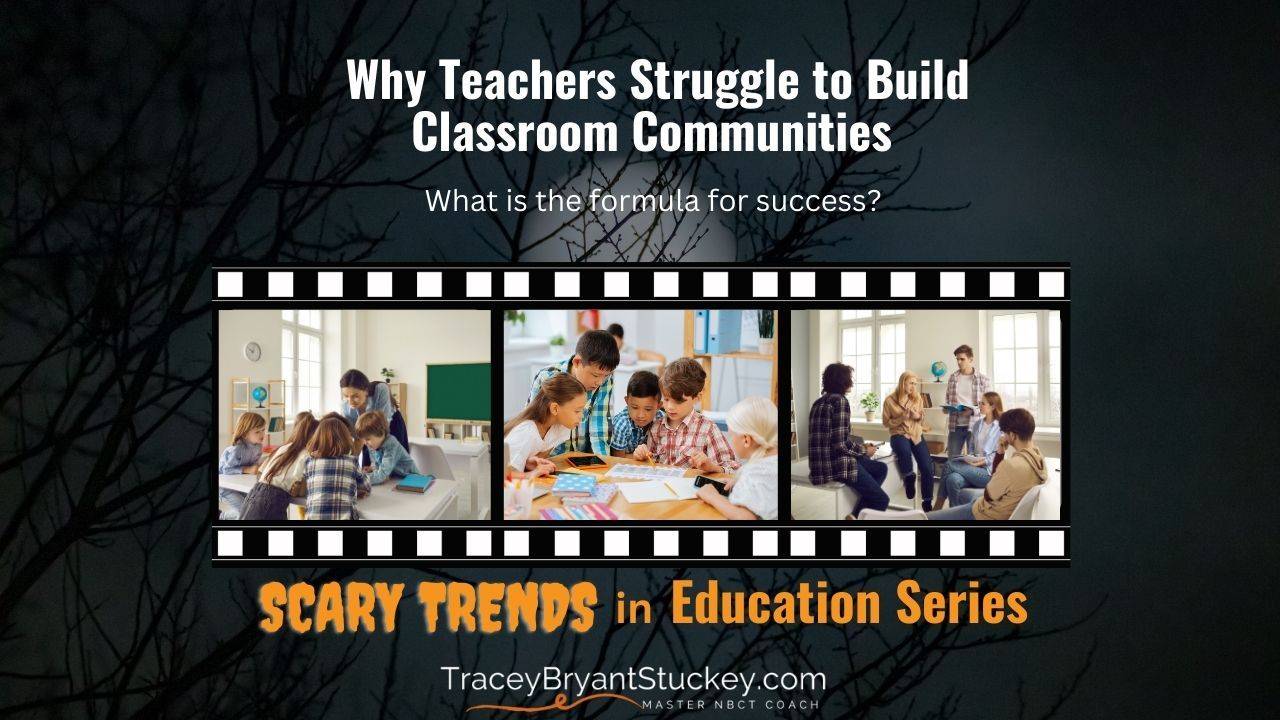
Skeletons in the Closet: Why Teachers Struggle to Build Classroom Communities
Oct 16, 2023
Blog 2 in my "Scary Trends in Education" I'll delve into a topic that's often left in the shadows: why teachers sometimes find it challenging to build strong classroom communities and truly understand their students on a deeper level. It's like unearthing the skeletons in the closet of education, so let's get digging.
1. Overloaded Curricula: One of the most prominent skeletons in this closet is the pressure teachers face to cover extensive curricula within a limited time-frame. The race to meet educational standards and prepare students for standardized tests often leaves little room for community-building activities or getting to know students beyond their academic capabilities. Sadly, more and more of these are becoming scripted curricula, which leaves the teacher with no voice to teach. Instead, they become puppets in a scripted play.
2. Large Class Sizes: Imagine trying to connect with 30, 40, or even 50 students in a single class! Large class sizes can be overwhelming, making it challenging for teachers to give each student the attention they deserve. Building a genuine sense of community becomes even more daunting when you're stretched thin. With the teacher attrition crisis, this is driving up the class sizes even more.
3. Administrative Demands: Teachers often find themselves buried under administrative tasks – grading, lesson planning, meetings, and paperwork. These demands can leave them with limited time and energy to focus on relationship-building and gaining a deeper understanding of their students' needs and interests.
4. Diverse Student Backgrounds: In today's increasingly diverse classrooms, teachers must navigate a wide range of cultural, linguistic, and sociology-economic backgrounds. Understanding and connecting with each student individually can be quite the puzzle when these backgrounds are as diverse as the colors of the rainbow.
5. Student and Teacher Burnout: Burnout is a real issue in the education field. When teachers are exhausted and emotionally drained, it's challenging to invest the necessary time and effort into fostering a strong classroom community. This is still lingering, especially for teachers, from the intense demands on teachers during COVID-19 Pandemic shutdown. These demands have only since increased due to the loss of learning during this shutdown.
6. Lack of Professional Development: Effective community-building and understanding of students require specific skills and strategies. Unfortunately, not all teachers receive adequate professional development in this area, leaving them ill-equipped to tackle this aspect of their profession. An on-going trend that has developed from this is the one-size approach where all teachers will receive the same PD for everyone within their PLC communities. We have seen this approach as non-effective within classrooms for students, and is trending from teacher feedback, in a similar fashion.
Now, here's where the National Board for Professional Teaching Standards (NBPTS) comes into play. The NBPTS offers a lifeline to educators seeking to overcome these challenges. Through its rigorous certification process, the NBPTS promotes teacher reflection, growth, and expertise. Teachers who pursue National Board Certification engage in deep self-assessment, honing their abilities to connect with students on a personal level and build vibrant classroom communities. For the National Board for Professional
Teaching Standards I offer support on Component 3 (Teaching and Learning in the Classroom), Component 4 (Assessment Drives Instruction), and for Renewal candidates MOC Renew Like a Pro, in which Learning Communities, classroom environments and knowing your students is at the forefront on nearly everything that encompasses the National Board.
In conclusion, by supporting teachers in their pursuit of excellence, the NBPTS empowers educators to break free from these constraints, ultimately allowing them to create the thriving classroom communities and deep student connections we all aspire to see. So, let's continue to shed light on these hidden challenges and work together to build stronger, more inclusive learning environments for our students.

